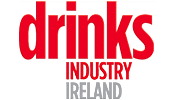Beverage exports up 8%
The beverage export figure forms part of Bord Bia’s 2017 Export Performance & 2018 Prospects report just published.
It was launched by the Minister for Agriculture, Food and the Marine Mr Michael Creed TD who pointed out that 2017 was the eighth successive year of growth for Ireland’s Agri-Food exports to 180 countries which now accounted for some €13.5 billion of Ireland’s overall export figure. Of this, food and drink accounted for €12.6 billion, up 13%.
Bord Bia’s new Chief Executive Tara McCarthy gave a breakdown of Ireland’s Agri-food export performance in 2017 at a briefing in Bord Bia’s Thinking House HQ at Clanwilliam Place in Dublin.
Irish Whiskey
Of the €1.5 billion beverage export total, Irish whiskey, at 36% of this, is driving category exports recording growth of nearly 20% last year to €600 million. Overall, Irish whiskey exports have grown by 131% over the past decade.
The US market was up 16% to over €240 million while European markets saw growth of 14% to €111 million. France imported €17.6 million-worth of Irish whiskey.
“This growth trajectory looks set to continue for Irish Whiskey as new markets are developed and premium products gain market share,” states the report.
Cream Liqueurs & Beers
Cream liqueurs too enjoyed a buoyant year rising by 10% to over €300 million and being responsible for 21% of beverage exports by value but beer sales, responsible for 20% of beverage export values, had a relatively flat year, declining marginally to €280 million according to the report.
The biggest setback was in the US where sales fell by 8% to €405 million but key EU markets showed growth for beer with France, Germany and Italy pushing overall exports to the region up by around 10% to nearly €44 million.
Ciders, juices & waters
Declines in cider exports were offset by gains in juice sales while 2016’s growth in exports of Irish waters (which account for 9% of beverage exports by value) was pushed back to below 2015 levels and to under the €100 million mark.
Juices
Irish juices performed very well in EU markets rising by one third to nearly €21 million. Spain remains the biggest market with over €5 million in shipments for the year and Belgium, France, Germany, Italy, Czech Republic and Romania all importing in excess of €1 million-worth of juice products.
Destinations
The top five beverage export markets last year were the US, UK, Germany, Canada and France.
International markets grew 10% to some €780 million and now account for 52% of beverage exports while the UK’s share declined slightly but witnessed a small uplift in shipments to €390 million in 2017. About one quarter of all beverage sales continue to go to the UK.
“In sales terms the UK and the EU have both recorded modest uplifts, with steady growth in EU markets such as Germany, France, the Netherlands and Spain,” states the report.
Overall, beverage exports to the rest of the EU rose to €327 million or by 4% compared to 2016 and the rest of the EU still accounts for 22% of the market.
Beverage exports to North America continued to increase, rising to €650 million, mainly down to Irish whiskeys and cream Liqueurs.
Russia also recorded solid growth to €14 million while Japan emerged the best performer amongst Asian countries with beverage sales up 30% to €9 million.
Sales to Middle East & North African countries fell slightly due to reduced shipments to UAE states the report which concludes that the outlook for Irish beverage exports in 2018 “seems positive, driven by the ongoing growth trajectory of Irish Whiskey, the popularity of premium brands and product innovation such as craft beers that are also in growth mode in key international markets”.
Bord Bia’s Tara McCarthy remains similarly optimistic about the Agri-Food industry’s prospects for the year ahead.
“While Brexit remains the great unknown, we still expect 2018 to be another year of growth, albeit at lower levels,” she stated, “Our key export categories, dairy and beef, remain stable with further volume growth anticipated. This, coupled with the significant opportunities evident in beverages, in particular Irish whiskey, provide further reasoning for the positive outlook.”









